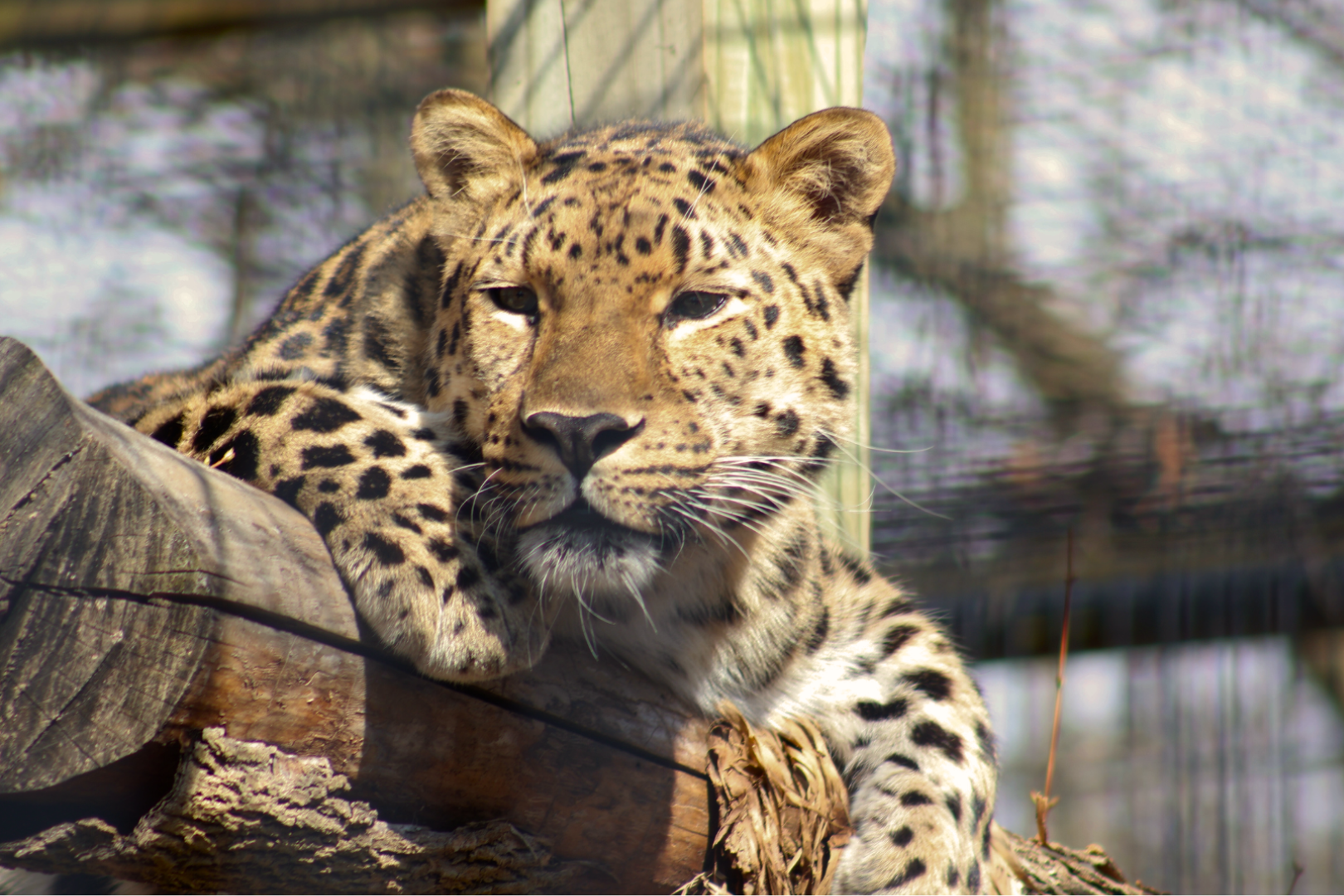I LIVE IN EUROPE AND ASIA
Though the amur leopard in our care resides in African Journey, amur leopards are native to southeastern Russia and northern China. They can often be found in temperate, broadleaf, and mixed forests.
I AM A CARNIVORE
This species primarily eats deer and boar, as well as other small mammals, like rabbits and rodents.
AMUR LEOPARDS ARE SOLITARY
The amur leopard is a solitary species. When hunting, they will often take their catch and hide it to avoid the meal being snatched by another predator.
A CAMOUFLAGED CAT
Spots are the perfect camouflage for leopards. When lying in the shade, these cats are almost impossible to see. These spots, called “rosettes” resemble the shape of a rose and are an adaptation to keep them concealed.
HELPING AMUR LEOPARDS IN THE WILD
The Fort Wayne Children’s Zoo supports WildCats Conservation Alliance. With less than 100 amur leopards in the wild, this organization funds research to help save amur leopard populations, and other wild cat species, from extinction.
I AM IMPORTANT TO MY ECOSYSTEM
Amur leopards are top predators in their ecosystem; therefore, they play a crucial role in keeping a healthy balance of numbers among other animals, especially herbivores. This in turn influences the condition of grasslands and forests.

